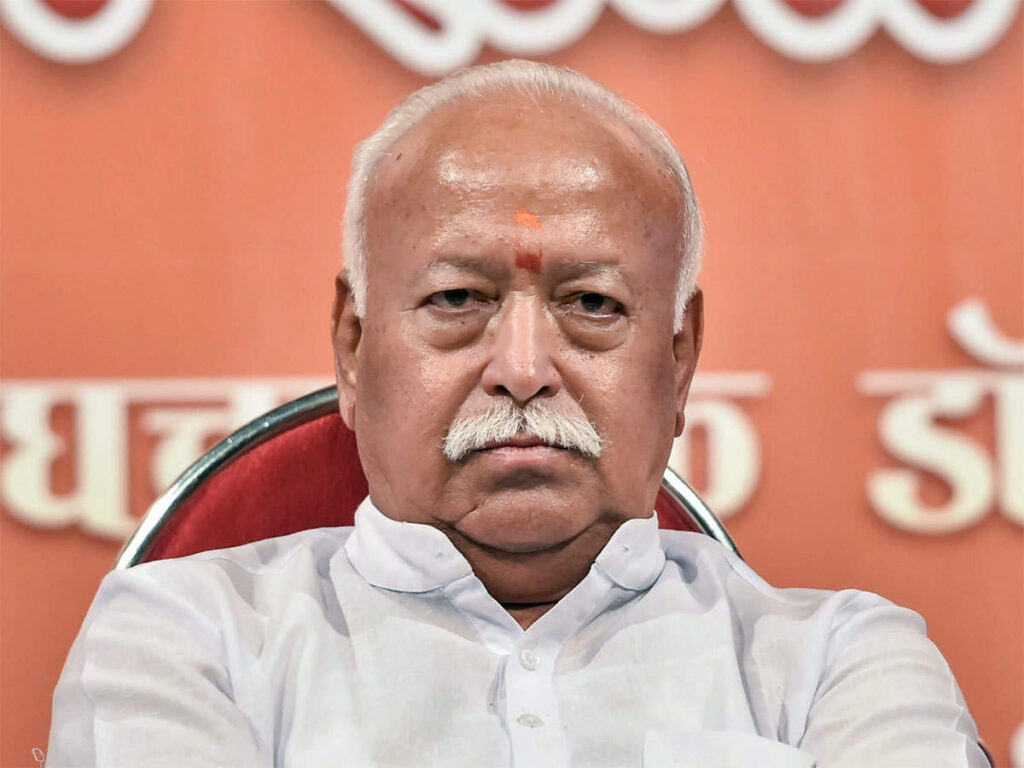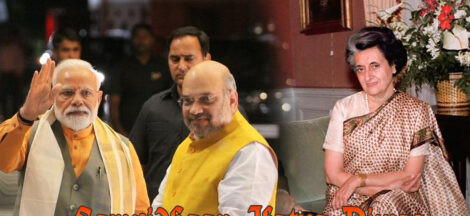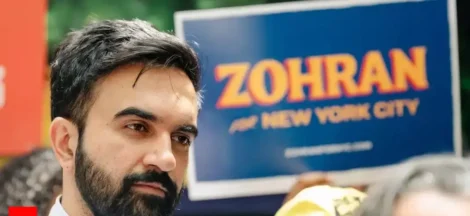RSS chief Mohan Bhagwat returned to Nagpur a disappointed patriarch. His ten day mission to Bengal to find a “credible and charismatic face” who could throw Mamata Banerjee out of power and install a saffron government after 2026 state assembly polls, could not be accomplished. Known as a man of few words, he did not express his displeasure openly but he was sure that the saffron ecosystem with the present leaders leading the pack would not succeed in catching the imagination of the people of the state and provide an alternate government.
What hurt him most was the assorted nature of the BJP leadership who were more concerned of their own personal projections than promoting the interest of the party. He was also not happy with the functioning of the state RSS leaders. The malaise of keeping aloof from the issues the people face, has also gripped the organisation. Bhagwat went back with the impression that Modi and Shah’s move to encourage the TMC turncoats to diktat the functioning of the saffron ecosystem in the state has conjured a common Bengali to keep away from the party. The BJP has remained a party of the non-Bengali migrants.
Enjoying the support of these people and disgruntled Marxist and TMC workers, the party might have won 77 seats in 2021 assembly election, it has not succeeded in making dent in the Bengali psyche. Bengalis still are averse to identify with the state BJP, though a major section of them feel frustrated with the functioning of Trinamool government in the state in the last fourteen years.. Recurring bloody group clashes amongst the TMC cadres have simply eroded much of its credibility. But they do not see the present BJP as its alternative.
At his meeting with 18 senior functionaries where the participants discussed expanding the RSS influence at the grassroots level, it was pointed out to Bhagwat that BJP slogan of Jai Sri Ram is proving counterproductive. The meeting was attended by 25 representatives from nine key divisions of the RSS, including the executive leadership, propagators. Movement coordinators, took part in separate discussions. It was also pointed out that though efforts were made to spread the organisation’s ideology and philosophy to the lowest levels of society, there were few takers from Bengali society.
Though they firmly believe in equality and do not discriminate, they at the same time nurse the feeling that national leadership has been thrusting their own culture on them, which was basically alien to the Bengalis. Some RSS functionaries nurse the feeling, “Until the BJP establishes itself as a true governing force in Bengal, many Hindus will continue to turn to Durga Mata [Mamata Banerjee]. The real problem is that many BJP leaders today mirror Trinamool in both conduct and approach.”
Mamata pursuing soft Hindutva has also unnerved state RSS leadership. She is being perceived as the upholder of the Bengali culture and social relations. Her initiative to construct temple in Digha, Ram Navami holidays, priest allowances, and Durga Puja grants have left no place for saffron ecosystem to exploit the Hindu sentiment in a substantial manner.
Though Sangh has been assiduously striving to transform mythology into movement, and movement into momentum, it has failed to catch the psyche of the common Hindu Bengalees and garner their support. On the contrary, its support base has been on decline. People look at the Sangh and BJP with suspicion. This fear of losing the support and credibility has been primarily at the base of Bhagwat giving the call to people to join his outfit to understand its mode of work and nature “from the inside” and it’s vision of building a strong Hindu unity.
His desperation was clearly manifest in his address to a gathering of 17000 uniformed RSS cadres at the SAI ground in Bardhwan; “I request you to come to the Sangh to understand it from the inside. There are no fees to join here, and no formal membership policy. It is completely up to you whether you choose to come inside (the RSS) or withdraw if your mind says so”. If his appeal reflected the averseness of the Bengalis to identify with the RSS, it also some level underlined aversion of the RSS cadres to reach out to the people. Bhagwat could sense the prevailing mood and which was why he appealed that the RSS cadres from state should intensify activities on the ground within a year. RSS has around 6,000 branches in Bengal. Now, the Bengal unit has decided to increase the number to at least 12,000 this year. RSS will ensure the opening of branches in all villages and all municipality wards in urban areas within a year.
The RSS leaders confide that as the top leadership is dissatisfied with the present set of BJP leaders, they would caution the BJP leadership not to mess the situation further in the state. Though Bhagwat did not mention Bangladesh in his speech, he nevertheless advised the cadres and leaders to keep a close watch on the developments there as “the rise of Hindu oppression” in Bangladesh would help strengthen the RSS in Bengal. Meanwhile the RSS said that it would begin its Bengal outreach from Ram Navami on April 6 with processions in at least 1,000 places.
Bhagwat was quite worried at the decline of the organisation in the state. During his meetings with RSS leaders and local influencers he mainly focused on strengthening the organisation’s framework and ensuring its operational success. The cadres and leaders have been asked to focus on organisational growth, community outreach, and strengthening ties with local stakeholders. Significantly he said; “Everyone has their own specific expertise, Hindus know that all the expertise is the invention of truth and it is one truth. Shrushti ke charachar jagat mein, jad chetan sab mein wohi ek hai jo nahi badalta, jo pehele bhi tha, aaj bhi hai, aur kal bhi rahega, who shashwat hai (In nature’s pastures, in its roots and everything, there one which is unchanging, who was there before, is there today, and will be there tomorrow, that is eternal). Everything else keeps changing”.
Senior RSS functionaries reveal that Bhagwat has stressed aggressively to expand at least two fold of the existing strength. If the sources are to relied at the close door meetings with the senior state leaders, Bhagwat focussed on executing the RSS’s ambitious “mythical eastern India” unification agenda. With the BJP already in power in Anga-linked Bihar and Assam, and Kalinga (Odisha), the primary aim has been to capture Bengal as the final frontier in this civilisational reclaiming. RSS cadres are told that “securing Anga-Kalinga guarantees Banga’s fall”.
Bhagwat specifically concentrating on South Bengal is the part of the strategy to win Banga. Past electoral trends reveal that whichever party had managed to win maximum number of seats in this region, ultimately succeeds in ruling the state. TMC continues to dominate and have its say as it has strong support base in North 24 Parganas and Howrah. Incidentally Bhagwat too opened his tour after holding close door meeting of the RSS and BJP leaders from 24 Parganas. RSS too has managed to enroll large number of its cadres from these two districts. Currently, over 53 organisations affiliated with Sangh operate in the state.
In this centenary year of the RSS, the leadership is propagating five points including environment protection, samajik samarshata (abolition of caste system), stress on sha bhasha, sha utpadan sha sanskriti (own language, production and culture), Parivar prabadhan (re-establishing traditional Hindu family), and nagarik kartavya (civic sense). At present RSS has 70,000 shakhas (branches) but aims to expand further with the mission “to strengthen national unity. (IPA Service)




 India Needs Answer To Reliability Of Narendra Modi Government’s Data
India Needs Answer To Reliability Of Narendra Modi Government’s Data 